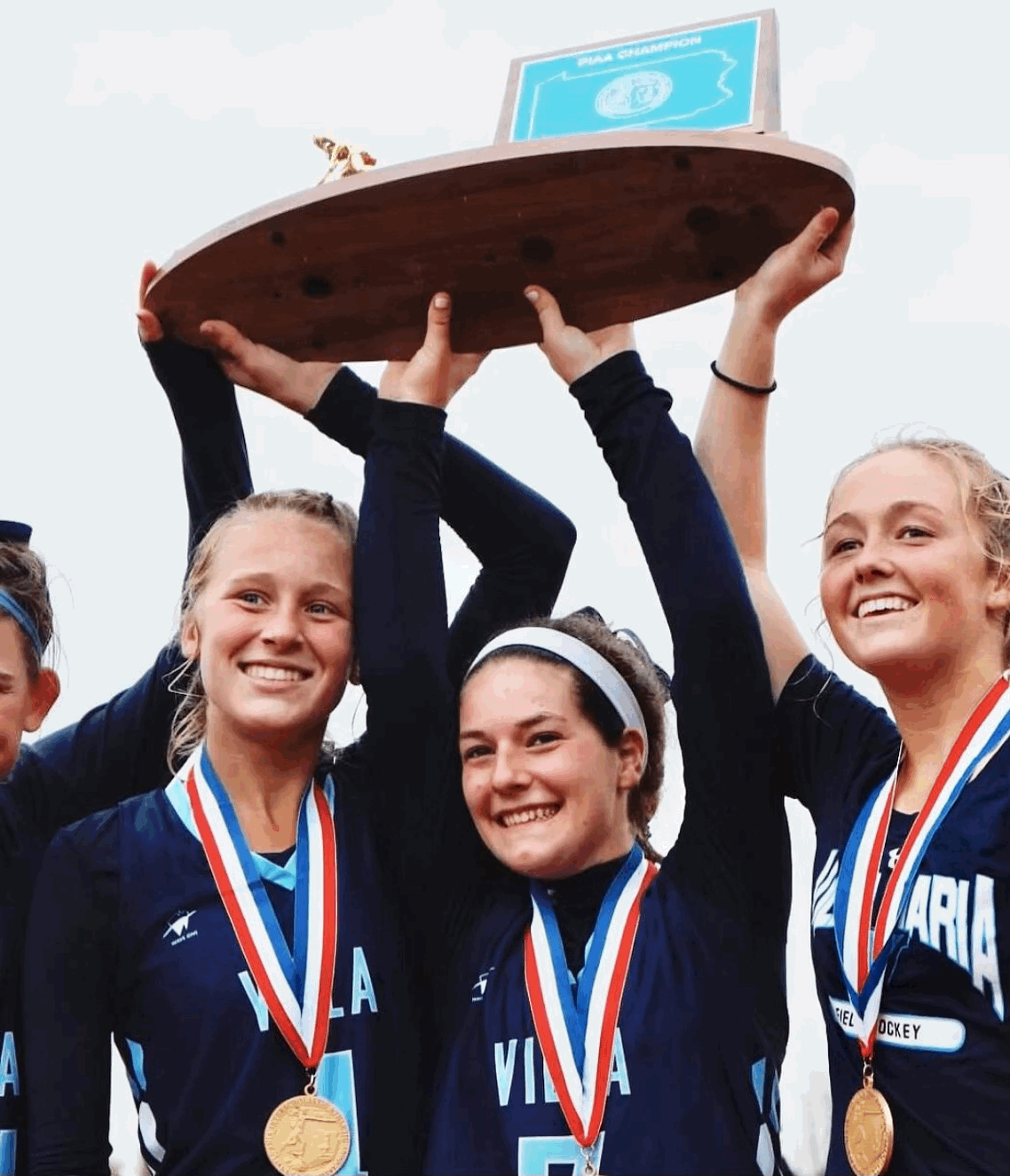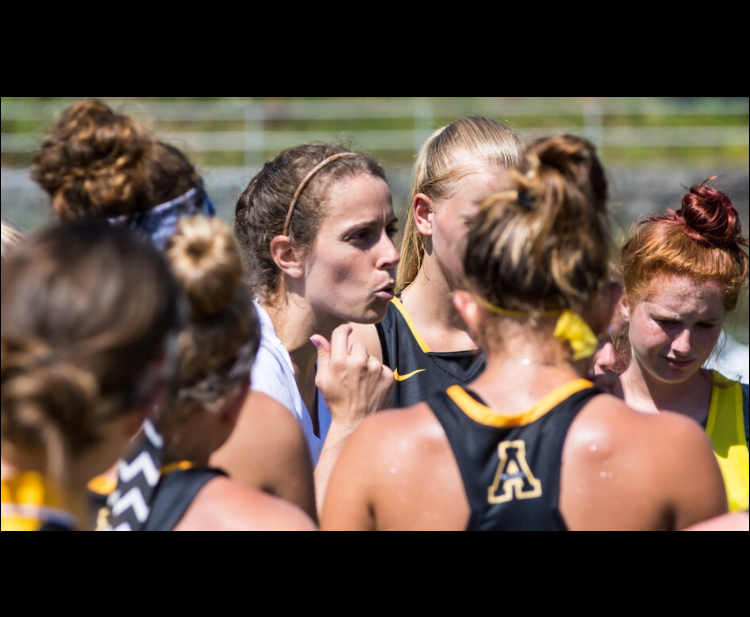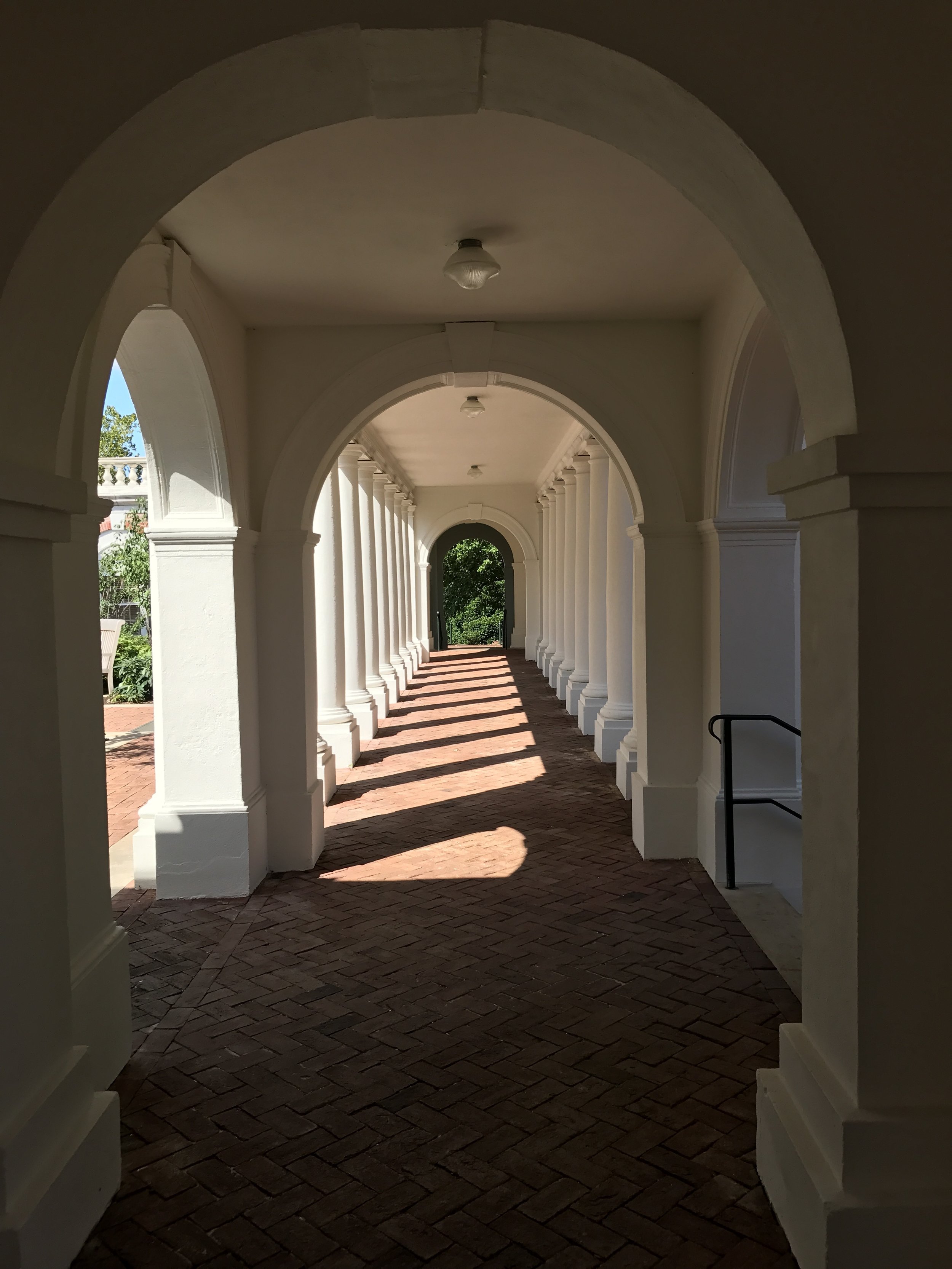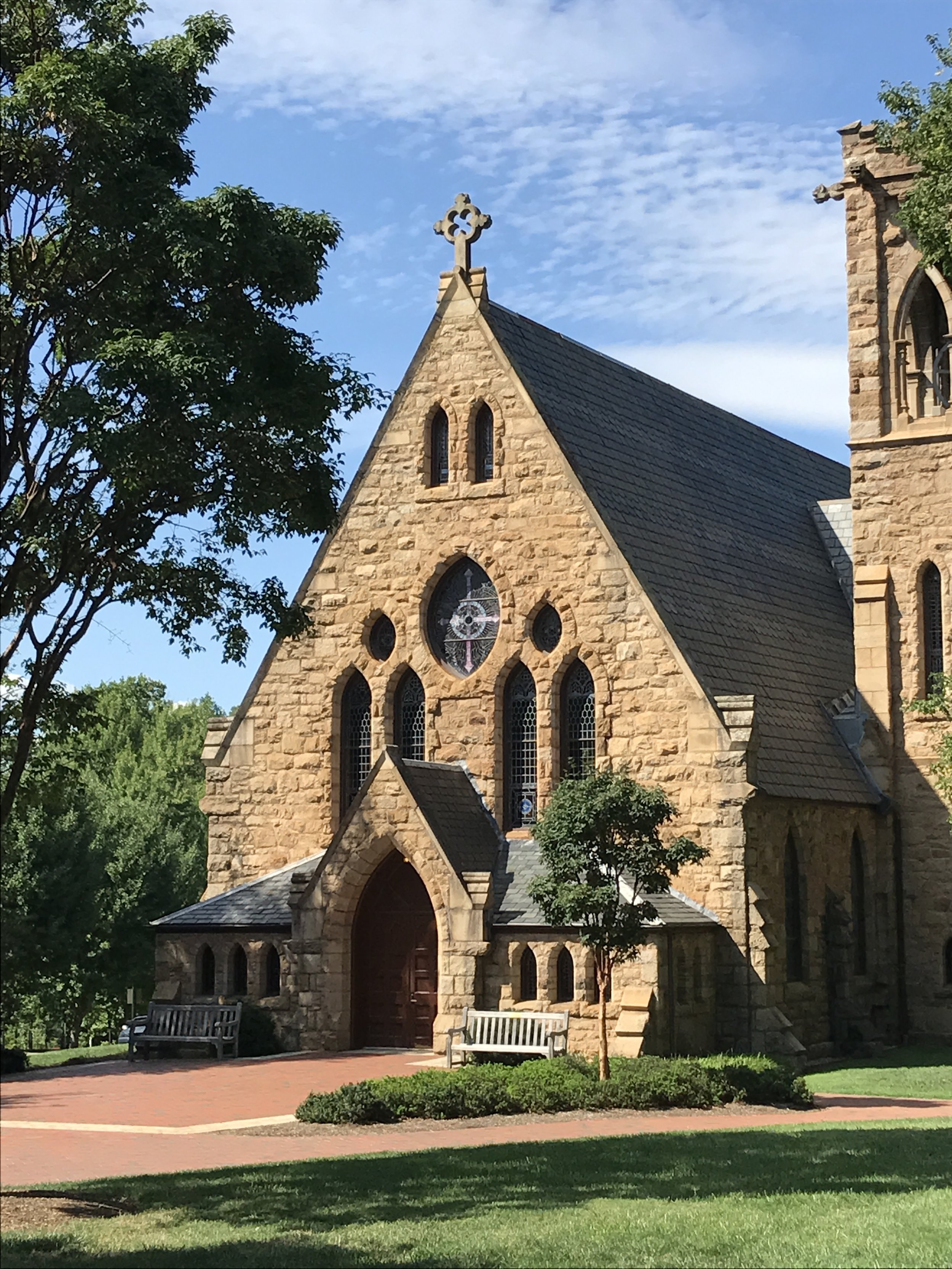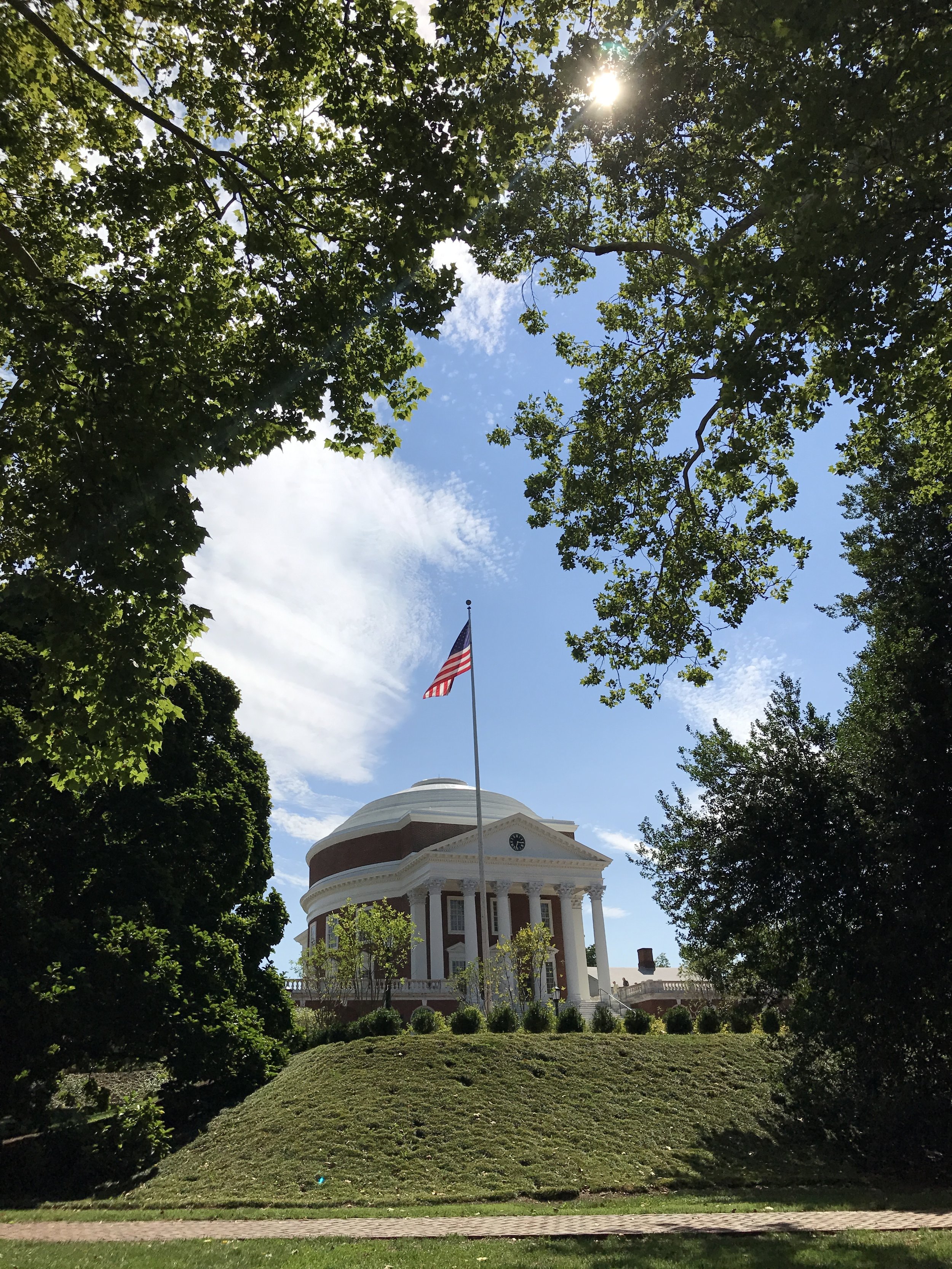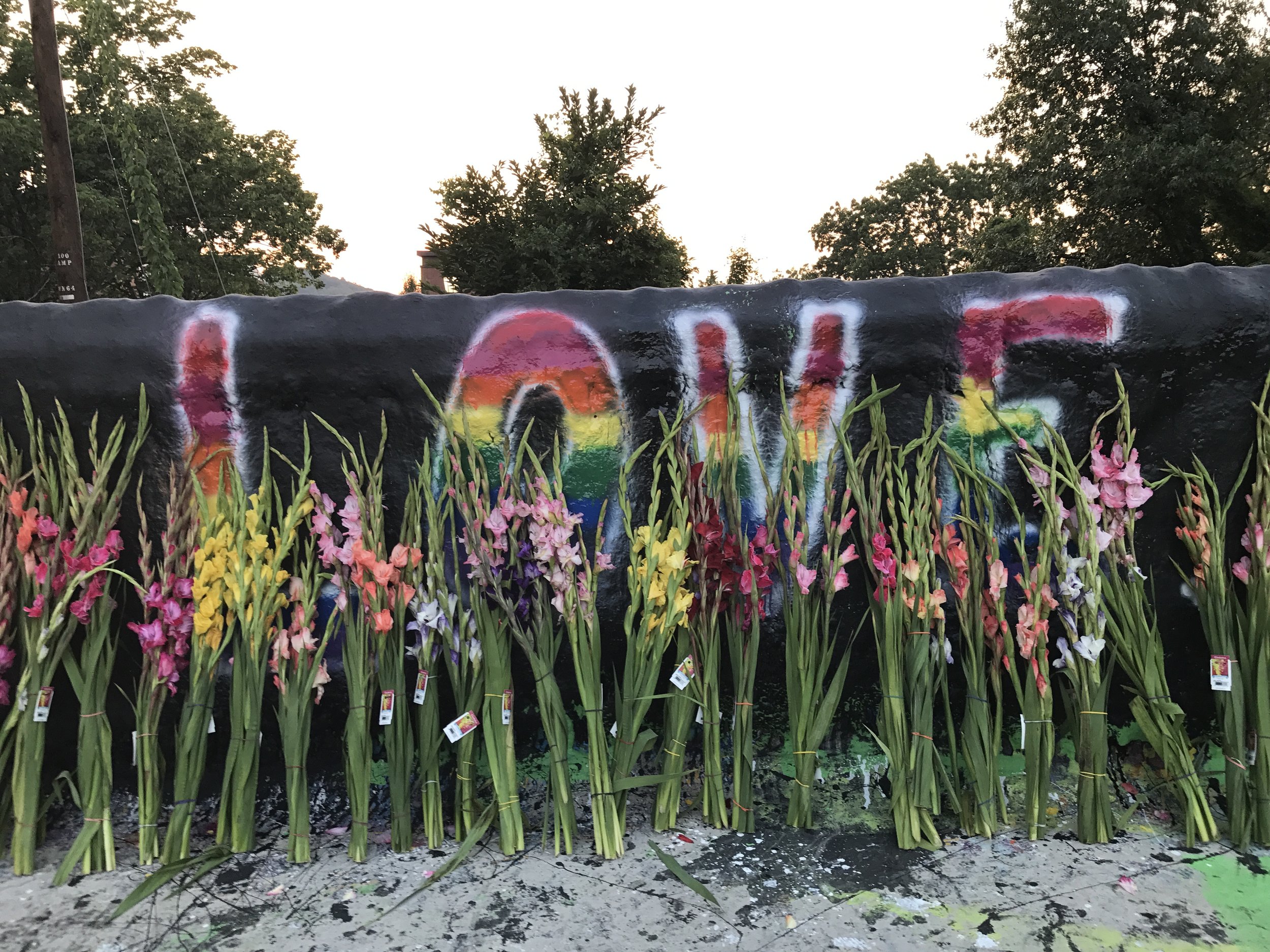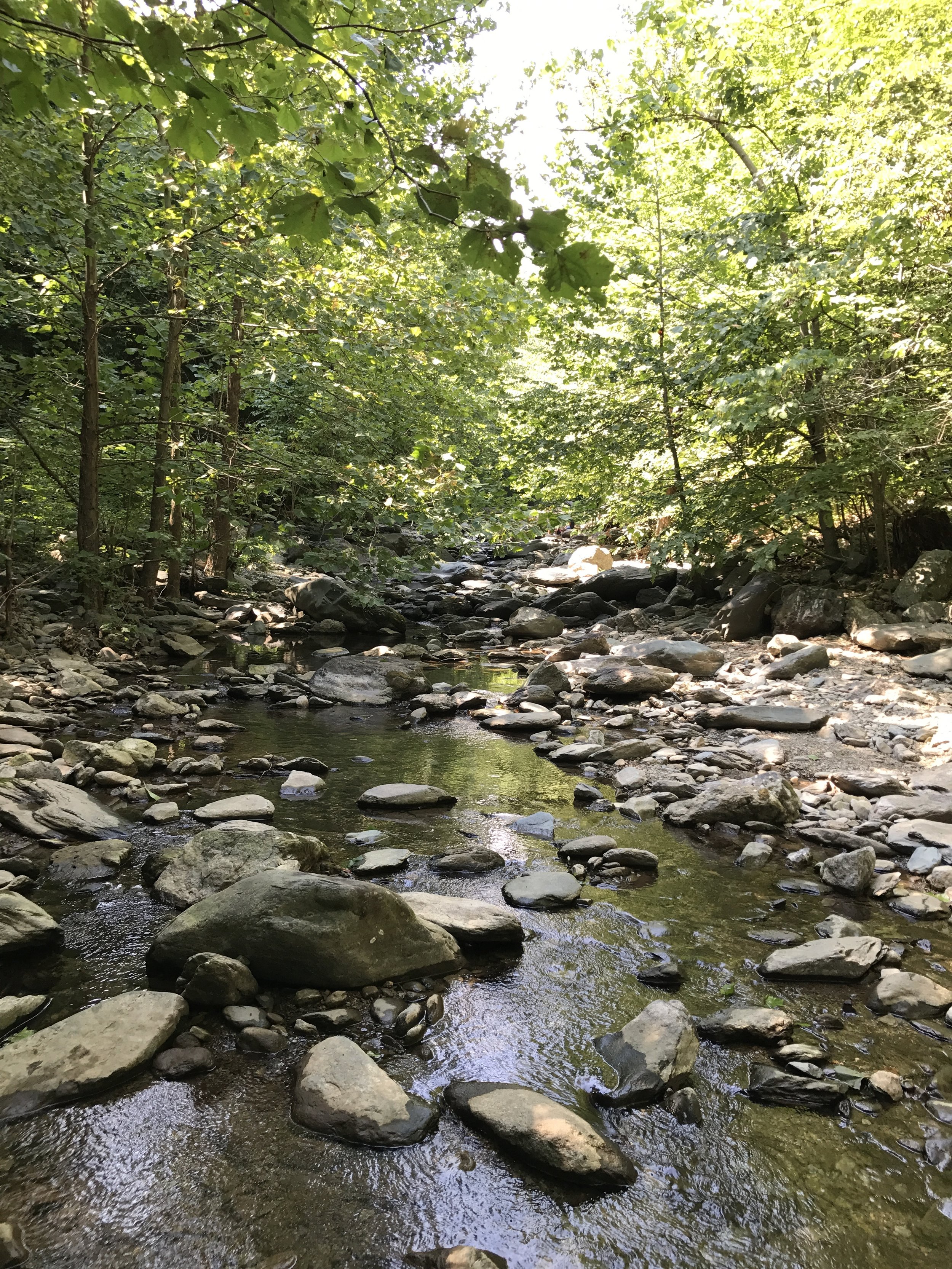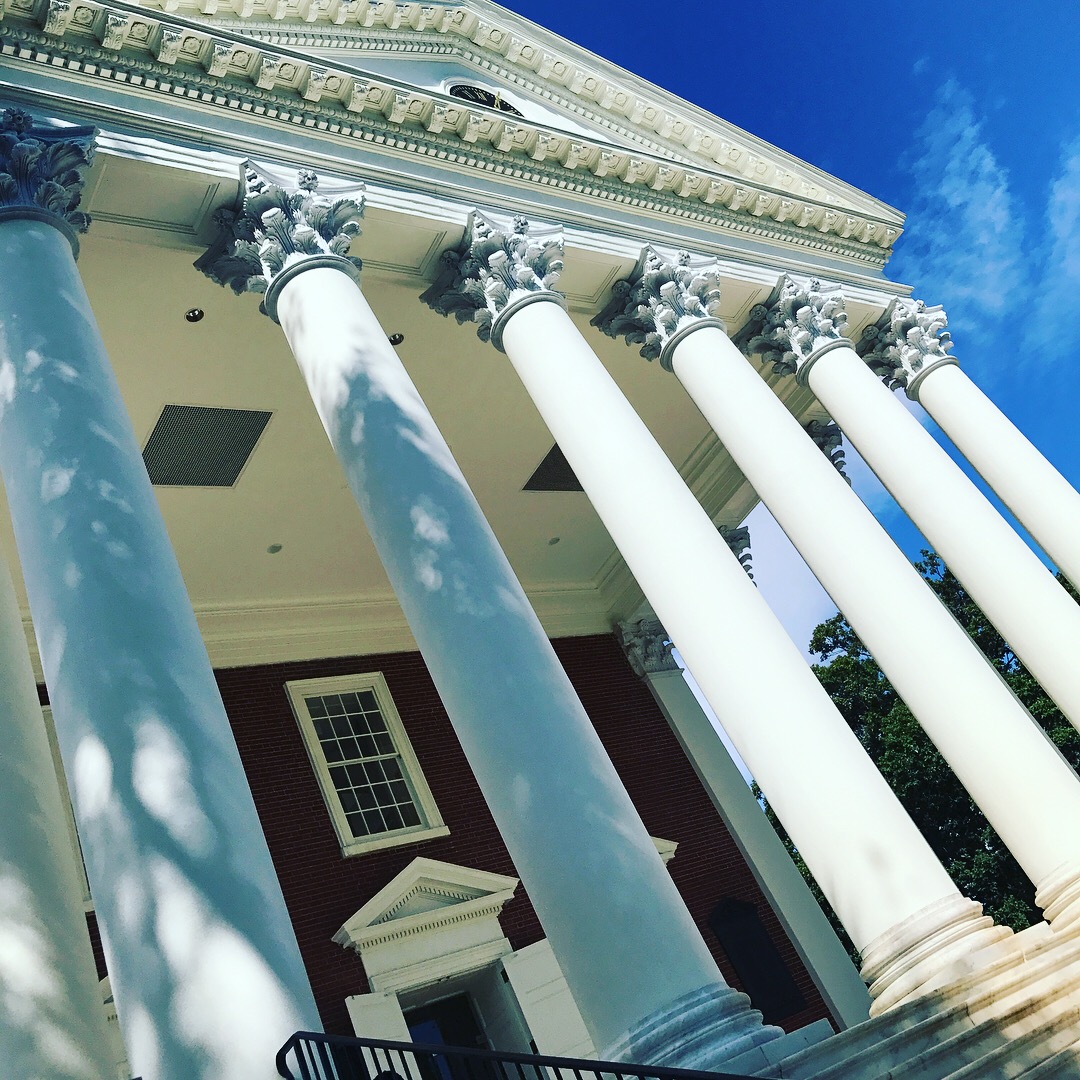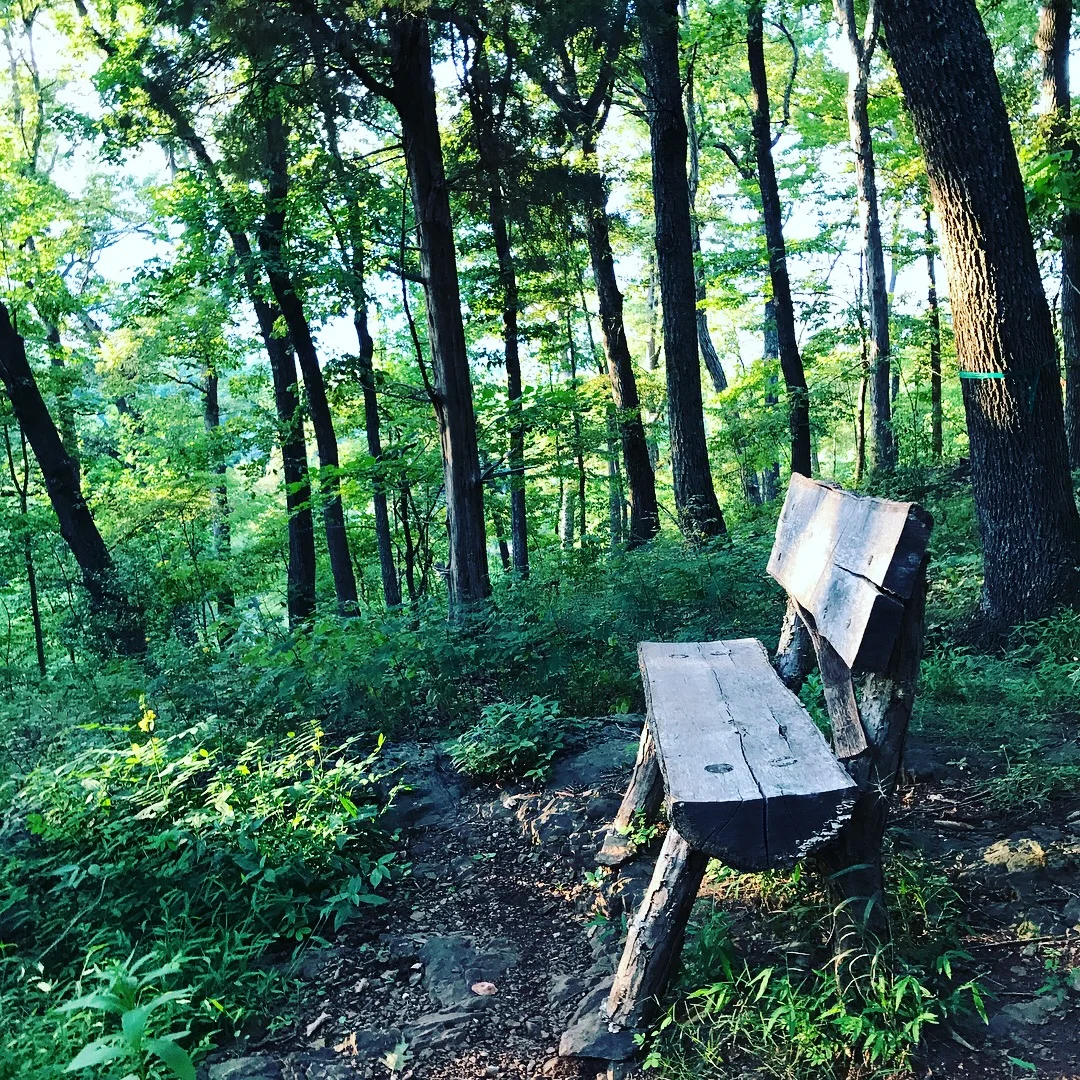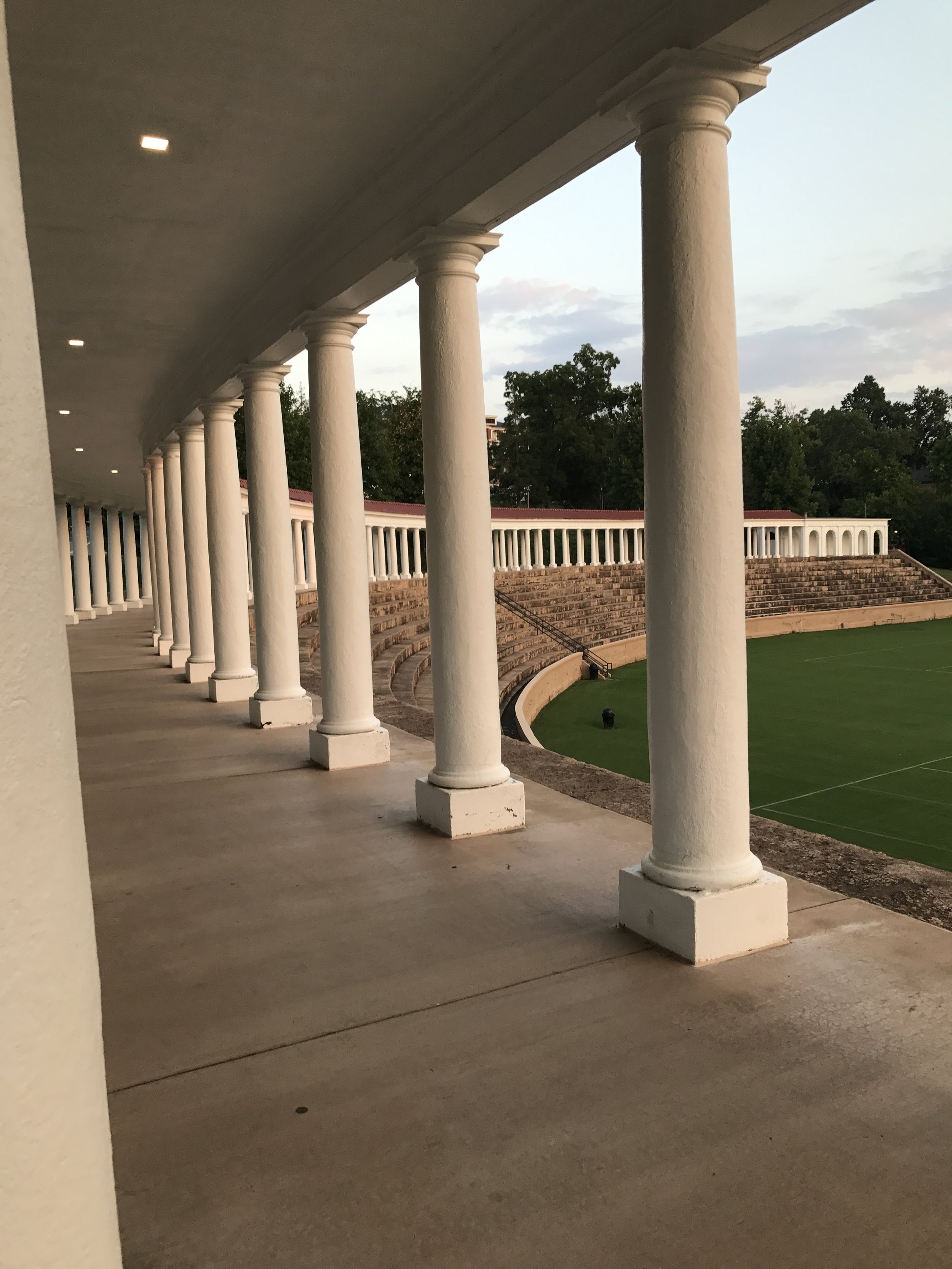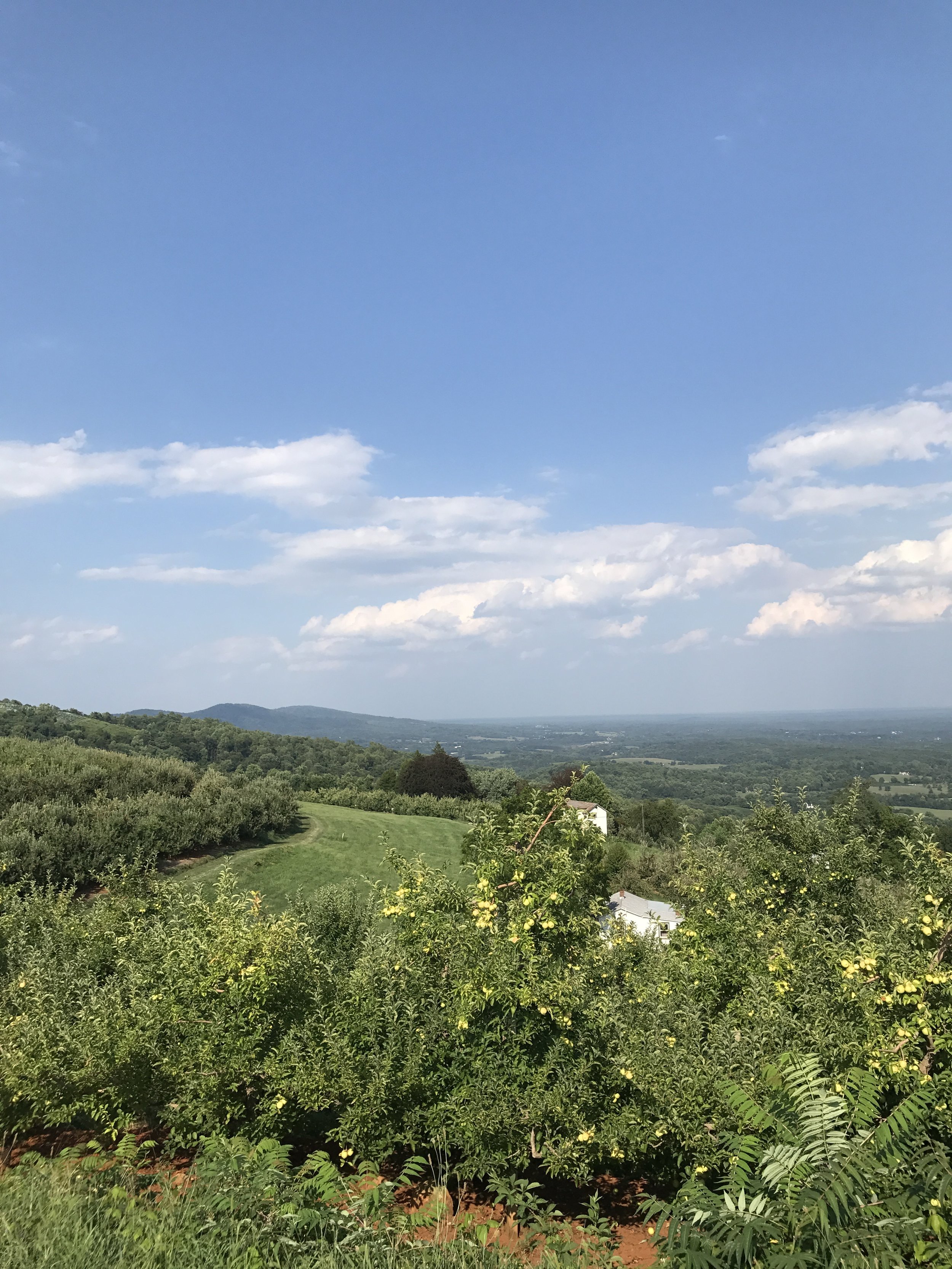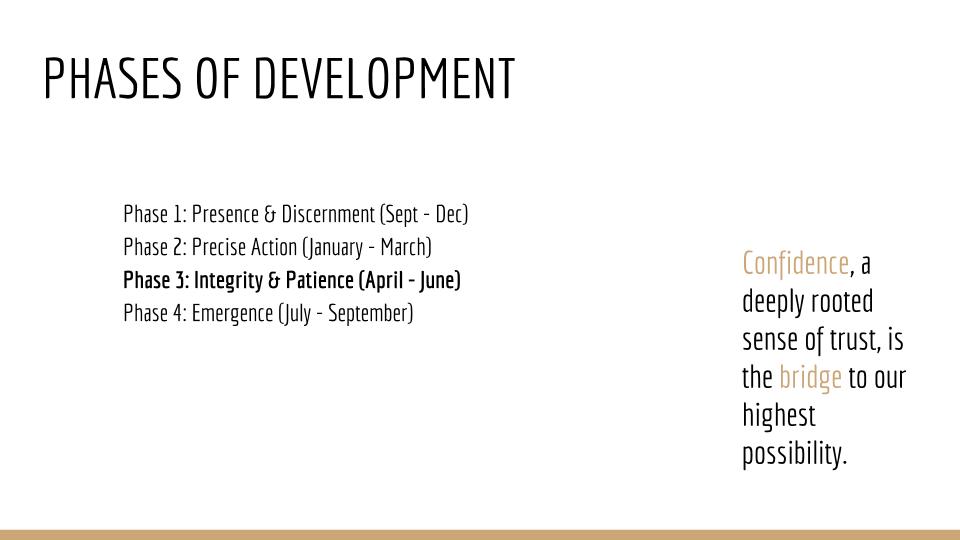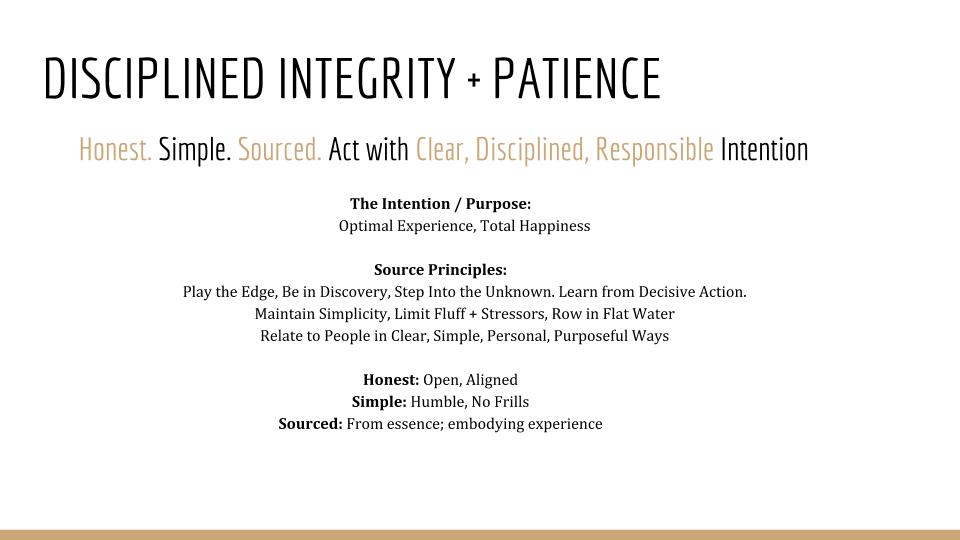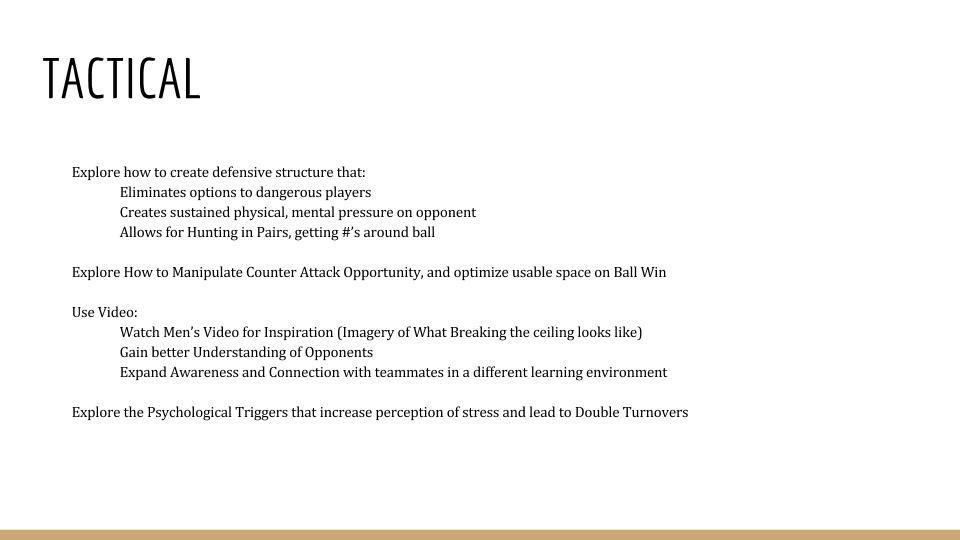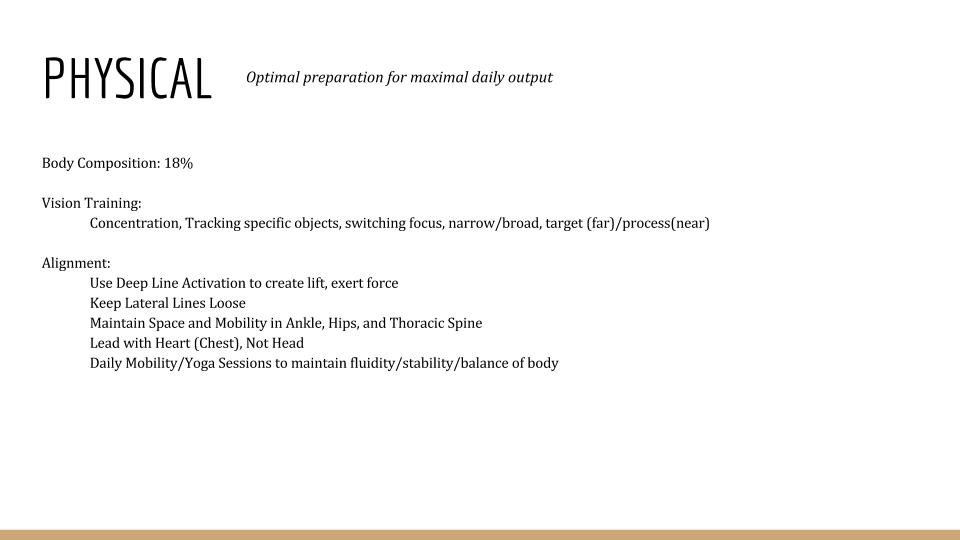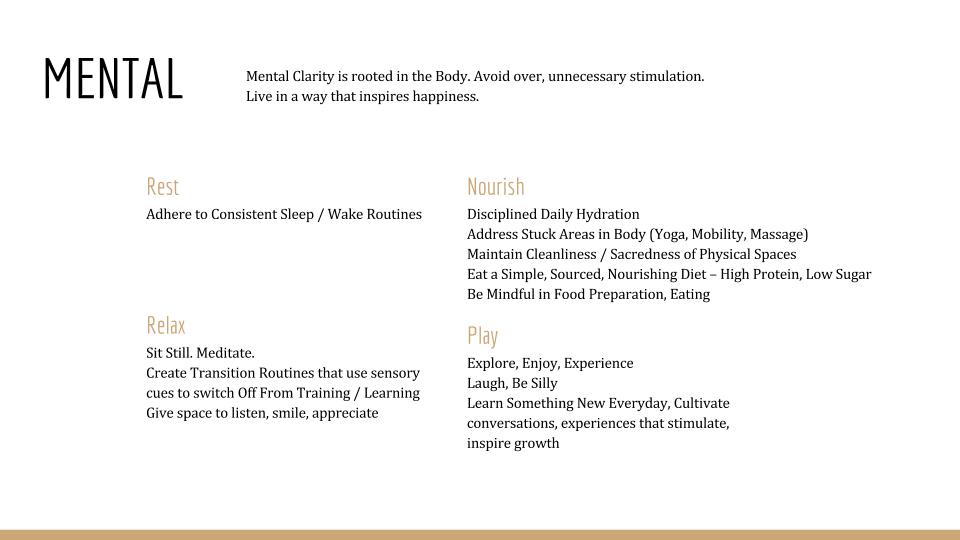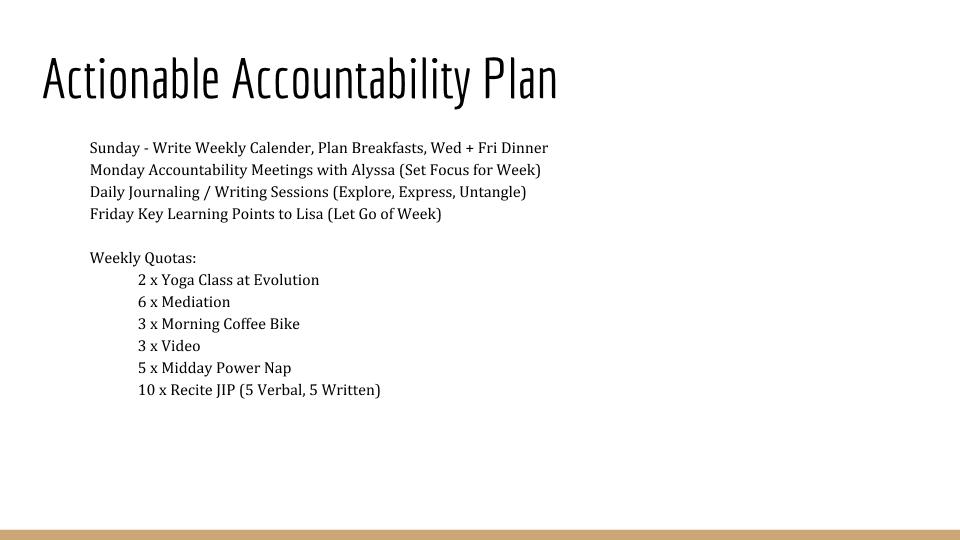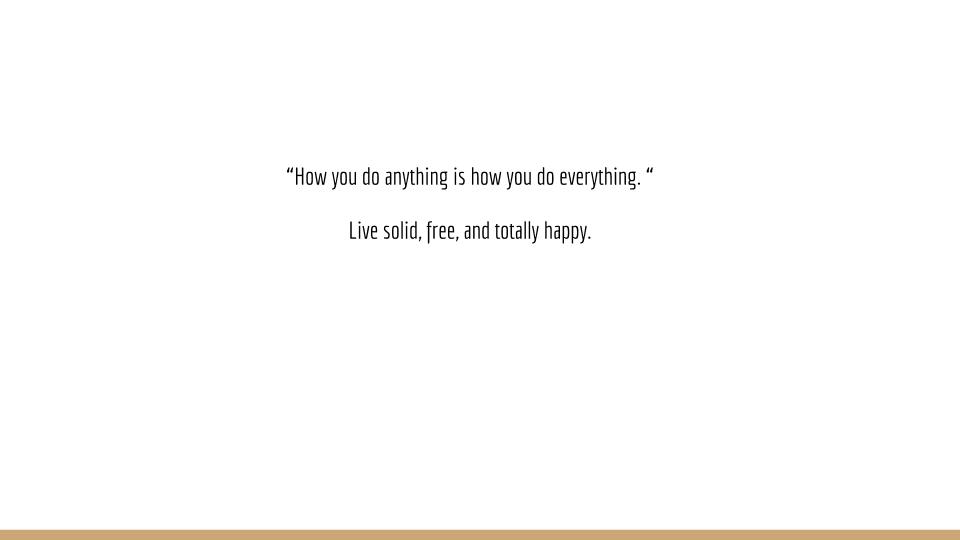A Conversation on the Student-Athlete Experience, Mental Health, and becoming your best
Praxis Athlete sat down with Greer Gill and Adele Iacobucci for a conversation on student-athlete mental health. The University of Virginia field hockey student-athletes are campus ambassadors for Morgan’s Message, an organization that “strives to eliminate the stigma surrounding mental health within the student-athlete community and equalize the treatment of physical and mental health in athletics.”
Photos courtesy of @adele_iacobucci and @greergill instagram
Greer Gill doesn’t think her earliest field hockey memory is iconic.
“I was in second grade,” she says, “ and I remember - this isn't anything iconic - we were behind the high school and we'd love to pick the dandelions and see who could get the most dandelions by the end of practice.”
The memory isn’t the sort of iconicness that we typically celebrate in sport. It’s not a vision of heroic prowess or perfection, but perhaps, it embodies something that we too often forget in the high pressure environment of elite college sport, the simple and unremarkable joy of being on the field with your friends ‘looking for dandelions.’
It is the humanness embodied by Gill’s first field hockey memory that needs to be held on to - and dare I say celebrated - as athletes embark upon the fall quest for greatness in college athletics.
Exploring the Relationship between Sport and Self
“ I went to college, and it was like, ‘Whoa, okay, this is a whole new ballgame.’ You go from being a big fish in a small pond to a small fish in a big pond.”
An athlete’s relationship to sport can be complex. It is never static. It evolves within each environment, with each new experience, interaction, and competition. For some, the field of play, once known for fun and freedom, can become a place of frustration and fear. The quest for competitive growth can morph quickly into an overly self-critical ladder of comparison. Where once in high school an athlete stepped off the field of competition with a sense of completeness, in college there can be a sense of ‘never good enough,’ a never satisfied quest to prove oneself. As an athlete invests more time, energy, effort, and soul into sport, the line between the person and the performer, between who the athlete is and how well they do, can become blurry.
Photos courtesy of @greergill instagram
This summer junior midfielder Adele Iacobucci was selected to the United States Women’s National Team. She speaks of her evolving relationship with the sport. “I always look at field hockey as kind of an outlet. And it's fun for me. I love it.” She reflected. “But as I’ve gotten older, it has taken up more and more of my life, and that’s something I’ve struggled with too, because sometimes it feels like a job. That's where I'm trying to figure out how to balance it better.”
While Iacobucci speaks to the balance between the work and play aspect of sport, Gill identifies the transition from high school to college as one of the most challenging in her relationship with field hockey. “I've had some ups and downs with the sport,” she says. “From first grade to senior year, it was always my constant. I didn't really know anything different, and then I went to college, and it was like, ‘Whoa, okay, this is kind of a whole new ballgame.’ You go from being a big fish in a small pond to a small fish in a big pond.”
In the midst of this changing relationship, it is easy for an athlete to forget to make space for the most important conversation within sport. A conversation that begins with a simple question, “how are you,” and continues with an honest response, “I’m struggling.”
Dancing the Fine Line of Criticism, Comparison and Compassion
The expectation of the college experience, you know that age-old message that ‘college is supposed to be the best time of your life,’ can get in the way of accepting the reality that college can be a really hard time in life too. A student athlete, who is likely living on their own for the first time, is pushed, pulled, and prodded a million different directions - academically, athletically, mentally, socially and emotionally. Behind the performance and the desire to please sometimes lives a nagging fear that if they aren’t performing well enough, they will be replaced. Iacobucci explores the expectation within the environment: “Coming into college you have a certain expectation of yourself because you've always been the best,” she said. “In college everyone is so good, so even if you're doing well, it can feel like nothing is ever good enough because if you're not getting better, there’s always someone else who can step up and take your spot.”
“I think a lot of student-athletes are their own worst critics. That’s personally how I feel. It’s a big struggle to find myself within such a competitive environment.”
The tenor of her response is a harsh yet honest reflection of the college experience for many student-athletes. As students, they ruthlessly compete for academic and social prestige, while as athletes, they compete for the prestige of playing time and prominence of championships. The relentless rigor of competition leads to constant critical self-analysis. “There is obviously the pressure of other people,” Iacobucci states, “ but I think a lot of student-athletes are their own worst critics. That’s personally how I feel. It’s a big struggle to find myself within such a competitive environment.”
Photos courtesy of @adele_iacobucci instagram
While being critical of performance is an important part of growth, exploring and defining oneself through social comparison can be a dangerously slippery slope, especially within elite environments. “When you are surrounded by top athletes,” Iaccobucci states, “ you can become an even harsher critic of yourself. You begin comparing, saying this person is better than me at this or that. Then as you become more critical, you start to work yourself up over things.”
For Gill and Iacobucci, one of the hardest parts of the student-athlete experience isn’t getting worked up over things, but rather it’s not having the time, space or support to recognize and work through what’s going on inside of you.
“I think my biggest thing is being able to actually identify my emotions, and why I'm feeling them.” Gill said. “I used to not realize when I was struggling, and then, when I did realize it, I immediately wanted to fix whatever I was feeling,” she reflects. “I learned from a sports psychologist to just sit and be okay with not being okay. Once I sit with it, then I can make changes. But I have to sit with it for a while, and in college that's a really hard thing to do.”
For Iacobucci, it’s the pace of college life that challenges her. “What affects my mental health the most is when I’m overwhelmed, and feel like everything is happening all at once,” she shares. “It's go go go constantly - school, hockey, life. It's hard to sit and deal with stuff, because there's always something that's going on that you could or should be doing.”
Clare Kehoe, Director of Morgan’s Message Education Program (MMEP) concurs with Iacobucci on the myriad of demands a student-athlete faces. “When talking with our ambassadors, anxiety and stress come up in almost every conversation.” Kehoe says. “College, even without playing a sport, is a challenging environment that can produce extreme stress amongst students when juggling an academic load, social life, and life away from home. Add a demanding full-time job (your sport) to your schedule, and athletes are expected to be “on” at almost all hours.”
In the busy-ness of day-to-day college life, and the consummate effort to be “on"at all times, hiding the struggle can seem like the best and easiest thing to do, but it comes with a cost, Gill shares: “Sometimes, it’s easier to be busy and not feel or talk about whatever is going on. But if you don’t take the time to be like ‘hey, something is going on here,’ it eventually catches up to you.”
Being Real with Yourself leads to Becoming Your Best Self
It’s not just about getting real with the world around you, it’s about getting real with yourself. In the fall of 2020, Gill had to sit out the early portion of the college field hockey season for medical reasons. “Field hockey was my constant and then, all of a sudden, it wasn’t,” she recalls. “I started to ask myself, what is my purpose? Who am I? What am I doing? I wasn’t in a good mental state. I didn’t know if I wanted to keep playing.”
“To be the best version of yourself, you have to recognize and take care of the state of your mental health.”
It was a vulnerable pause for Gill as she took time to focus on her mental, emotional and physical health. “It's hard to be vulnerable, especially as an athlete. It’s hard to accept when something isn’t going well. You want to suck it up, put your uniform on, go out there and pretend nothing is going on. But the stuff bottled inside eventually comes out.” When she talks about sharing her struggle, she says, “It was hard to make that leap, and admit that I was feeling something that wasn’t the best feeling.”
Iacobucci faced a similarly challenging time this summer while playing field hockey with the USA U21 team who was preparing for the Junior Pan American Games. On the experience, she says, “It’s hard to be real with yourself. It can be a really vulnerable feeling to admit that you are struggling, or can’t do all the things that you want to do. Sharing it with others is even harder. You feel like you are letting people down. But in the long run, it helps.”
Ultimately, for Gill and Iacobucci, focusing on mental health isn’t just a buzz word or trend, it is a way of becoming the best students, athletes, teammates, and humans they can be. “If you are ignoring what’s going on inside of you, mentally and emotionally, you can’t be the best version of yourself. You can’t grow as an athlete. You have to take a step back, become aware of what you are feeling.” Gill shares.
Iacobucci emphasizes, “To be the best version of yourself, you have to recognize and take care of the state of your mental health.”
Awareness, Community and Advocacy through Morgan’s Message
Gill and Iacobucci stand with Morgan’s parents and ambassadors from JMU following the UVA vs. JMU game (photo courtesy of @morgans_message_uva )
As they navigate their own unique journey’s as student-athletes pursuing ACC and NCAA championships, Gill and Iacobucci have become champions of another kind too, champions of mental health. As ambassadors for Morgan’s Message, an organization created after the death of Duke Lacrosse student-athlete Morgan Rodgers, Gill and Iacobucci started the University of Virginia chapter in early 2021.
“The biggest thing that we want to do is create a community where people feel safe and comfortable to share their experiences,” Gill shares. “We want to grow the conversation by sharing stories and amplifying voices,” Iacobucci adds. “We want it to feel natural for people. That’s the main thing, we want it to be natural,” she emphasizes.
“Empathy is critical to any conversation about mental health and wellness,” Clare Kehoe, Director of MMEP states. “Oftentimes we forget that you cannot see beneath the surface and likely don’t know what someone is really going through mentally. Unfortunately, the mental health stigma is still so real. If someone is courageous enough to open up about their personal experiences, validate them. We must continue to support and encourage those who are brave enough to let us see beneath the surface.”
To make mental health a natural part of the conversation, the ambassadors hope to inspire their peers at Virginia to make space for honest conversation within their respective teams. “We want each team to have their own ambassador who can help guide conversations on mental health within their team, because every team is different and has unique struggles. A huge part of a team's growth is when teammates are able to share what they're going through,” says Gill.
“Surround yourself with people and things that you love, and know that it’s okay to seek help. Take small steps. Talk to a friend, or sports psychologist or someone you trust. Just share what you’re going through. And you’ll see other people are there for you. You are not alone.”
Through its education program (MMEP), Morgan’s Message supports motivated student-athletes, like Gill and Iacobucci, to become active leaders and advocates for student-athlete mental health on their campus and in their communities. “We are lucky at the University of Virginia, because we have two full time sports psychologists. A lot of schools don’t have that. But even though we have two, that isn’t always enough. We want to advocate for more,” said Iacobucci.
As they build their community and advocate for more resources to support student athlete mental health, they hope their peers will remember a few important things. “When you are struggling, remember that you're not alone,” Gill says. “Surround yourself with people and things that you love, and know that it's okay to seek help - whatever help means to you.” She adds, “Take small steps. Talk to a friend, or sports psychologist or someone you trust. Just share what you're going through. And you'll see other people are there for you. You are not alone.”
By taking small steps and sharing her struggle, Gill learned to listen to what was going on inside of her. Finding her way back to the field last season, she recalls “When I got back on the field, I realized how much I had missed it, and how fun it was. I missed those moments with teammates, the thrill of going out and playing a game. It's something you can't describe. It’s so pure.”
Perhaps, the joy she found competing again is a homage to her first field hockey memory, and the joy of being on the field with her friends ‘looking for the dandelions.’
Like Gill, as we embark upon the competitive quest for greatness, may we all remember to look for the dandelions and celebrate the simple joys of sport.
Elevate the conversation
Gill and Iacobucci suggest these three actions high school and college student athletes can take right now to elevate the conversation on mental health in athletics.
Apply to be at Morgan's Message Ambassador (https://morgansmessage.org/education-program)
Build a support group within your community
Check in with someone you love
If you’d like to donate to Morgan’s Message click here. For resources on mental health support, click here.




